specnaz-s/iStock/GettyImages
You probably know a few sturgeon species, such as ossetra, sterlet, sevruga and beluga, for their celebrated roe. Because of the harvesting of roe, you rarely find wild sturgeon in the United States, and then only two species from the West Coast -- white and green. The sturgeon you get in the market has several advantages over wild-caught sturgeon, however, mainly consistent quality. Sturgeon has firm flesh redolent of poultry, and doesn't have any bones to remove. Sturgeon grills well, but you have to remove it right when it finishes cooking to prevent it from toughening.
Set up the grill to cook with two-zone indirect heat and close the lid. Whether you're cooking fillets or a full-grown whole sturgeon, you want to sear it first then transfer it to a cooler part of the grill to cook through.
If you have a small gas grill, set one of the burners to medium-high and leave the other off. If you have a large gas grill, light the outside burners or the top and bottom burners, but leave the middle burners off.
If you have charcoal, empty a lit chimney starter full of charcoal on the tray, rake the coals all the way to the left and right sides and place an aluminum pan in the center to catch the drips.
Blot the sturgeon all over with paper towels to get rid of some of the surface moisture. Season the sturgeon all over with kosher salt and pepper.
If you have a whole fish, stuff the inside. Start with lemon slices, which create steam during grilling and help the fish cook evenly, then add fresh herbs, spices and aromatics, such as garlic and onions, if desired.
Score the skin of sturgeon, whole or fillets, with 2- or 3-inch-long slices spaced 1 inch apart. Sturgeon has tough skin that tends to curl during cooking. Coat the sturgeon all over with vegetable oil.
Clean the grill grates if they have a lot of carbon built up on them. If you want to create smoke, toss a handful off hardwood chips on the coals or in the gas grill's smoker box.
Cover the center of the grill, or the area that doesn't have direct heat under it, with 1/4- to 1/2-inch-thick slices of raw onions. The onions keep the sturgeon off the grates so air can circulate under it and help it cook evenly on both sides.
Lay the fillets flesh-side down over one of the hot sides of the grill and let them cook for about two minutes. Place whole sturgeon over the fire, too, but let it cook a bit longer, about four or five minutes.
Turn the fillets over with a spatula and place them skin-side down on the onions on the indirect-heat portion of the grill.
If you have a whole sturgeon, turn it over -- you might need a helper -- and lay it the best you can on the onions over the unheated portion of the grill. It might be difficult to fit a large whole sturgeon on the indirect-heat part of the grill only, but it's OK if the just the tips are over the fire.
Cook sturgeon fillets until the flesh flakes with a fork and it appears opaque all the way through, or until it measures 145 degrees Fahrenheit with a meat thermometer. It takes about 10 minutes per inch of thickness to cook a fillet all the way through.
Cook whole sturgeon until the temperature inside the cavity measures 145 F. It takes anywhere from 20 to 30 minutes to grill a whole sturgeon, depending on its size.
Remove the sturgeon from the grill and let it rest for a few minutes. Use the resting period to squeeze lemon juice over the fish, to brush melted butter on it or to garnish it with fresh herbs.
Related Articles

How to Cook Sauteed Perch Fillets
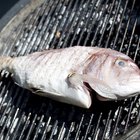
How to Cook Redfish on a Grill

How to Cook Fresh Brook Trout

Can You Eat the Skin on Grilled Trout?

How to Cook Saba Fish

How to Cook Mackerel in an Oven

How to Cook Filet Mignon Medallions on ...
How to Cook Bone-in Tilapia

How to Cook a Fresh Perch
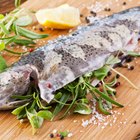
How to Cook a Whole Rainbow Trout
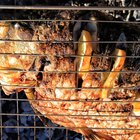
How to Grill Grouper Over Indirect Heat

How to Cook Trout Fillets in Tin Foil

How to Cook a Fresh Pike

How to Grill a Whole Catfish

How to Clean Mullet

How to Pan-Sear Swordfish

How to Cook Belt Fish

How To Smoke Fish On A Gas Barbecue
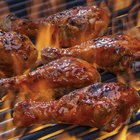
How to Cook Chicken in a Crockpot & ...
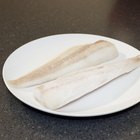
How to Cook Amberjack Fish
References
Writer Bio
A.J. Andrews' work has appeared in Food and Wine, Fricote and "BBC Good Food." He lives in Europe where he bakes with wild yeast, milks goats for cheese and prepares for the Court of Master Sommeliers level II exam. Andrews received formal training at Le Cordon Bleu.